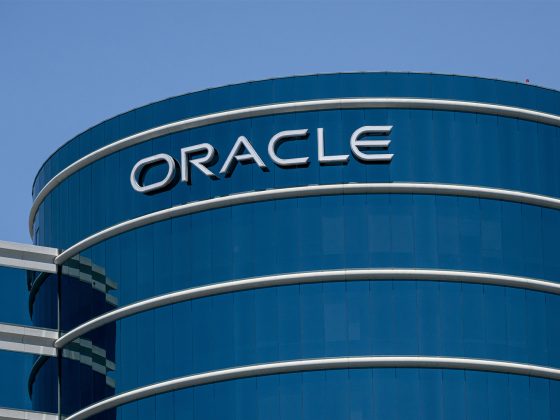As you know, we’re obsessed about learning from customers. That’s why, we made it a point to sit down with a new Google Cloud customer every week this year to share with you their journey both to our unified data cloud platform and what they’ve learned from their experience along the way.
What began as a simple exercise of routinely keeping up with our customers quickly evolved into a complete video series that I have the pleasure of hosting every Tuesday. This year you learned from companies of all sizes, all industries and across the globe.
From our partners:
In this series, we learn that succeeding with data requires tough business decisions, a lot of creativity and a specific vision. Perhaps for the first time, this series, aptly titled “Data Journeys,” spotlights our community voices from the data space in a genuine, grassroots, and unfiltered way.
We’ve learned so much from each customer guest and their company’s unique challenges, trials, and triumphs – all things that make up a great journey or adventure. So, as we put the wrappings on another eventful year, we’re thrilled to tie a bow around our 2021 customer “Data Journeys” and share the top 3 learnings from their journeys with you.
Lesson 1: Customers migrating to the cloud aren’t simply looking for a provider that can successfully execute a lift-and-shift motion. Instead, they look to take advantage of their cloud migration as an opportunity to rethink, relearn, and rebuild.
When they were reaching the end of their contract with a different data warehousing provider with a fixed compute model, Keybank, a regional financial institution with over 1,000 branches managing over $145 billion in assets, decided to migrate to the cloud. I was fortunate to speak with Mike Onders, EVP Chief Data Officer, Divisional CIO, and Head of Enterprise Architecture for Keybank who led the migration charge.
According to Onders, he decided Google Cloud Platform was the right fit for the dynamic, security-sensitive nature of the banking company’s business because Google’s data suite provided an elastic, fast, and consistent environment for data.
When selecting Google Cloud however, Keybank was clear they did not want to simply lift-and-shift their Teradata Warehouse, analytics users, and Hadoop Data Lake to Google and wipe their hands to call it a day. Instead, they saw the migration as an opportunity to reinvent old processes and traditional ways of doing banking. “We really spun up Python and Spark clusters to do some new fraud modeling, especially around smart holds and check deposits and how to use fraud algorithms to determine whether we should hold this money or release it to you when you deposit that check,” Onders said.
We really spun up Python and Spark clusters to do some new fraud modeling, especially around smart holds and check deposits and how to use fraud algorithms to determine whether we should hold this money or release it to you when you deposit that check
In addition to smart check hold modelings, Keybank has re-engineered how they conduct attrition modeling, next best offers/product recommendations, and credit risk predictions using Google Cloud’s intelligent data cloud platform. Now, they are eyeing even more new innovation, particularly around how to use data to drive customer satisfaction and differentiate their services from their competitors. .
For more insights, watch Keybank’s episode on Data Journeys.
Lesson 2: Customers are passionate about applying Google’s technology, from predictive analytics to AI and automation, to ‘data for good’ initiatives.
TELUS is one of Canada’s largest telecommunications companies with over 9.5 million subscribers. The powerhouse manages geolocated data generated by talk and text signals, networks, and cellular towers across the country. For some perspective on the sheer amount of data they handle, TELUS analyzed over 1.2 petabytes of data last year and are expecting that number to grow more each year.
In March of 2020 it became clear that COVID-19 was more than an outbreak and growing to be a global pandemic, and TELUS faced a choice to carry on business as usual or to serve their community at a larger scale. With Google Cloud by their side to support them, the choice was a no brainer.
TELUS realized they could leverage their data residing within Google Cloud’s data cloud in a privacy-preserving manner to launch a data for good initiative and support all Canadians during a time of need. Within a matter of just 3 weeks using tools like BigQuery and Data Studio, TELUS launched a new platform that empowered the Canadian government to make better strategic decisions about how to combat COVID within its borders – all while keeping individual subscribers’ data private.
For their efforts, TELUS earned a HPE-IAPP Privacy Innovation Award and helped the government contain and minimize the spread of the virus.
After speaking with Michael Ames, Senior Director of Healthcare and Life Science at SADA, I realized their company was similarly focused on using data analytics technology for community good. SADA is a Google Cloud Premier Partner that offers consultation and implementation services. Ames’ day-to-day involves helping hospitals and healthcare providers migrate their data to the cloud.
Hospitals and healthcare systems around the United States undoubtedly handle massive amounts of data from symptom records to patient history to insurance and payment records, and more. SADA realized that increasing the rate that the right treatment would be matched with the right person during their first visit would help hospitals run their business better, increase patient satisfaction and health, save both parties time and money, and therefore maximize profits that hospitals could reinvest in care for their community.
But a study in the journal Nature examining the top ten biggest drugs by revenue shows just how infrequently they achieve their intended purpose. It’s clear to Ames that precision matching of the right drug to the right patient is a major issue.
To that end, SADA supports a number of innovative companies developing predictive models within Google’s intelligent data cloud stack. They’re able to help doctors prescribe treatments that better match individual patient needs and health profiles, providing far more personalized medicine.
Looking forward, SADA is excited to use a data-driven approach to improve other aspects of health care. “Take that idea of prescribing drugs and expand that to physical therapy treatments, behavioral therapy treatments, decisions we make about where and how people should live, whether we should build a park in a certain neighborhood, how the air quality is affecting health, and we start to get a sense of the need to bring data together in a way that will be… much more powerful in treating the health of people” Ames said.
Take that idea of prescribing drugs and expand that to physical therapy treatments, behavioral therapy treatments, decisions we make about where and how people should live, whether we should build a park in a certain neighborhood, how the air quality is affecting health, and we start to get a sense of the need to bring data together in a way that will be… much more powerful in treating the health of people
For more insights, watch TELUS’ episode and SADA’s episode on Data Journeys.
Lesson 3: Customers choose Google Cloud to address today’s needs, but also because they are gearing up with technology that can solve their unknown problems of tomorrow.
Delivery Hero is the largest food delivery network outside of China. The food delivery company operates in over 50 countries and processed over 663 million orders in just the first quarter of 2021.
I was shocked to learn that millions of orders equal 174 data sets, 5,000 tables, and upwards of 7 million queries a month. Hence, it was my pleasure to speak with Matteo Fava, Delivery Hero’s Senior Director, Global Data Products and Analytics, and understand how they manage their immense data volume.
A significant part of Delivery Hero’s data strategy involves making sure the right teams have access to the right data on the backend, and that their customers have a safe, efficient, and enjoyable experience of receiving their food on the frontend. In fact, that was the main reason why they partnered with Google Cloud in the first place: to ensure business would run as usual with no hiccoughs.
As Fava’s team gained deeper understanding into user behavior and delivery routes through Google Analytics and BigQuery, Delivery Hero discovered a puzzle they hadn’t previously anticipated of how to best deliver food in a consistent way despite significant cross-cultural differences between countries or even cities or neighborhoods within the same country.
One such puzzle was how to optimize “horizontal” deliveries such as delivering to standard homes versus “vertical” deliveries such as delivering to apartment buildings while often keeping a 15 minute delivery promise to their customers. Delivery Hero ultimately used real-time insights into deliveries and predictive modeling to ensure their estimated time of food delivery took into account longer elevator wait time in populated cities like Hong Kong and the time it takes to enter and navigate condominium complexes in places like Dubai.
Delivery Hero knew it was one thing to have an efficient new platform for managing data, but it’s another to trust that this platform can solve unexpected challenges that may not be apparent today.
For more insights, watch Delivery Hero’s episode on Data Journeys.
Wrapping it up
We can’t wait to explore new customer data journeys next year and continue to share insights with the community.
We hope you’ll follow the Data Journey series by subscribing to the playlist, and if you have a great suggestion for a guest (or want to be a guest yourself), please let us know!
By: Bruno Aziza (Head of Data & Analytics, Google Cloud)
Source: Google Cloud Blog
For enquiries, product placements, sponsorships, and collaborations, connect with us at [email protected]. We'd love to hear from you!
Our humans need coffee too! Your support is highly appreciated, thank you!





